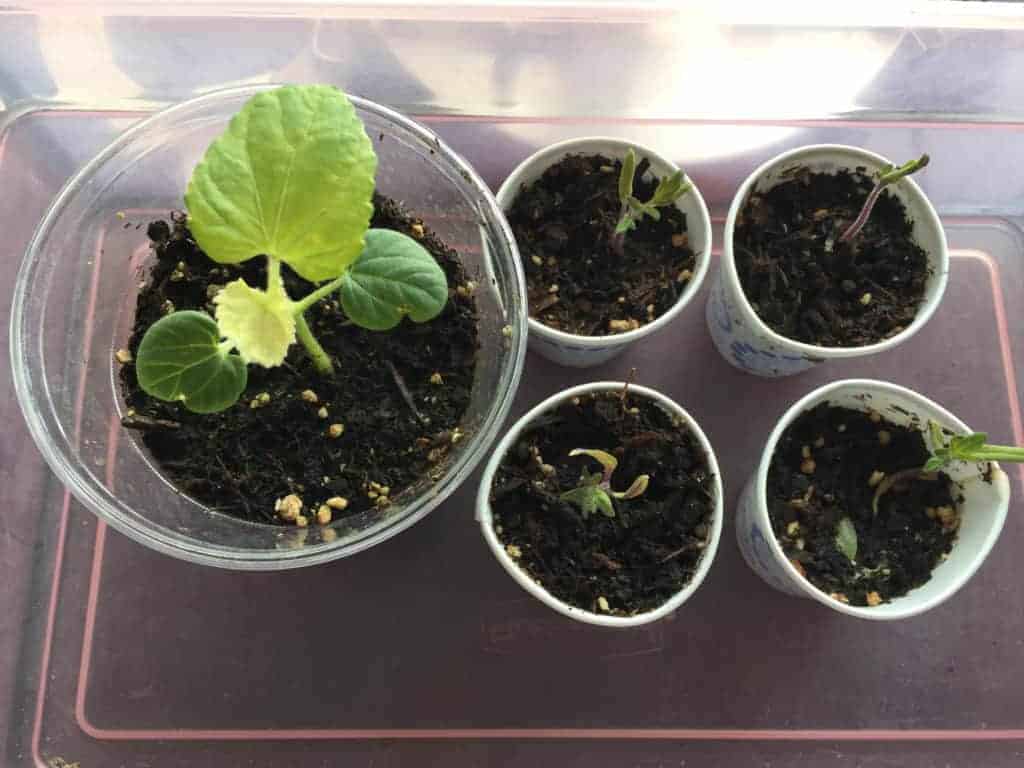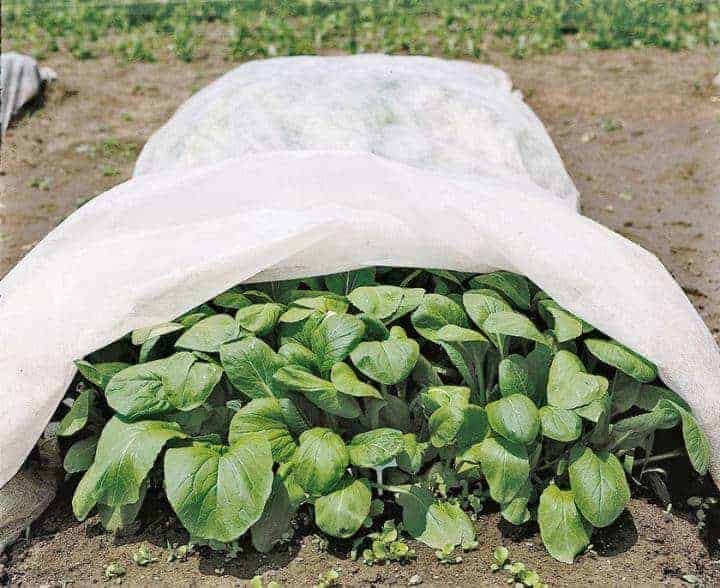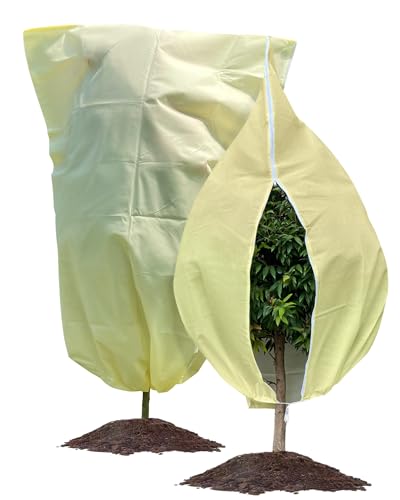If you are here reading this article, I am sure you are looking for some valuable tips on protecting plants from frost. Cold weather can spoil your gardening. Therefore, it is essential to have them protected well earlier. You can’t rush out to your garden to cover those cold-sensitive plants during freezing temperatures.
Table Of Contents
- 1 How To Protect Plants From Frost?
- 2 11 Tips For Protecting Plants From Frost
- 2.1 1. Bring All Your Potted Plants Inside
- 2.2 2. Cover The Plants
- 2.3 3. Mulch The Plants
- 2.4 4. Water The Plants Heavily Before A Cold Night
- 2.5 5. Supply Your Plants With A Heat Source
- 2.6 6. Use Cold Frames
- 2.7 7. Select Your Plants Wisely
- 2.8 8. Site Selection Is Vital Too
- 2.9 9. Succulents Require Special Care
- 2.10 10. Have Raised Beds
- 2.11 11. Don’t Overreact During A Plant Damage
- 3 Defensive Measures
How To Protect Plants From Frost?
If the weather is too chill or your little green plants are too tender, then there are a few things to do to keep your garden safe. Protecting plants from frost all comes down to how tender they are, how long the temperature remains, how wintry the climate is & how much effort you need to spend. Few plant species have the ability to survive even cold temperatures and they do not require additional care to help them grow. However, not all plants are the same. Few species do require extra care.
What Happens When Frost Affects Plants?

“Frost” damages plants in a big way. It causes ice crystals to develop inside plant cells, which in turn makes water unavailable for plant tissues. Thus, there is a disruption in fluid movement. Frost-damaged leaves appear black, dark brown, shrivelled, and water-soaked.
Based on the ability to tolerate temperatures, plants can be classified into 2 main types
- Tender Plants – Easily injured or killed by cold temperatures
- Hardy Plants – Can tolerate short-term freezing
Citrus, bougainvillea, avocados, succulents and fuchsias fall under “tender plants”. If you reside in a place prone to freezing or frost, then it is vital to know about the hardiness of different plant species.
11 Tips For Protecting Plants From Frost
1. Bring All Your Potted Plants Inside

The initial tip on how to protect your plants from frost begins with a very easy solution – just remove all your plants (of low temperatures) from outdoors. Suppose, you got any hanging baskets or potted plants outside, then bring them indoors. Even a sunroom or your garage will be helpful. Consider decorating your plants in a hall or room if you have adequate space inside. If you are planning to fill your interior with few plants, then consider the below things
- Place your potted plants near the windows. This will give them enough sunlight too.
- If the weather is extremely cold, placing your plants near a window could be damaging at the same time. Freezing temperatures may transfer from windows to your plants if they’re touching.
- Avoid placing your potted plants next to vents because this can easily dry them. Finally, making them die
2. Cover The Plants

One of the most popular tricks on how To Protect Plants From Frost is by “covering”. Anything will do for this. Say, for example, old blankets, burlap sacks or sheets. While covering your plants, wrap them loosely & securely with rocks, bricks or stakes. Lighter covers could be placed over the plants directly but heavier covers might need some support like wire (prevents plants from being crushed).
Select your covering & spread it out carefully so that it does not touch its branches or leaves. Use some stakes to support it up, else it can harm the plant. This technique works best for protecting plants from frost than cold temperatures because covering will not increase the temperature. Covering tender plants during evenings will retain heat & protects them further from freezing. Nevertheless, it is vital to remove the covers as soon as the sun rises up. Otherwise, plants might suffocate.
- Take the covering out during the daytime so that your plants get proper air & light
- You might require weighing or tying down the covering-cloth so that it does not blow away
3. Mulch The Plants
Yet another best way to defend your plants from frost is by applying a mulch layer. This trick is best for some plant species but let me also clear to you that not all “tenders” can bear heavy mulching. So, these might need covering instead. Some well-liked mulching materials include pine needles, straw, piled leaves, and bark. Mulch is more like an insulator to the plants. It holds heat and locks the moisture in the soil during cold temperatures. Moreover, mulch also protects the plant’s root system from freezing temperatures. If you are planning to use mulch, make sure to keep it only about 2 to 3 inches deep.

- Mulch made from pine straw or wheat works great because it is trouble-free to take out once you are ready to uncover the soil again. In addition, it traps better heat.
- Some plants, like strawberries and roses, can be overwintered simply by covering them entirely with clean or fresh mulch.
4. Water The Plants Heavily Before A Cold Night
You may find this tip strange, but actually works. Water the soil heavily around the plants before a cold night. Believe it or not, soil traps better heat when it is wet than dry. Moreover, it evaporates slowly while warming the air around plants. But let me also tell you that this could also backfire. Therefore, never do this trick if you are expecting a hard freeze. However, to guard against little frost, water it generously.
- Do not water the soil, which is already frozen. This can worsen the plant’s condition
- Do not water the soil heavily around succulents since they cannot tolerate excess moisture levels
5. Supply Your Plants With A Heat Source
Since the topic is about how to protect plants from frost, this tip is something I cannot miss writing about. If, you are experiencing extremely cold conditions, which you think even your plants will not be able to survive, help them out by giving them a heat source. You could either do this by covering them with a blanket or plastic tarp or construct a temporary greenhouse & then place them in a heat source.
Possible heat resources include 100-watt bulbs and Christmas lights. The best part of using these is that they are not that hot. So it won’t hurt your plants. Instead, it keeps them warm all night. However, make sure not to place the heat supply too close to your plants.
- Use extension cords for the outdoors to avoid any risky situation.
- Uncover all your plants & turn off the heat supply during daytime to permit ventilation.
6. Use Cold Frames

Few tender plants need over-wintering in a cold frame. You can buy cold frames from any garden centre. Wood, bricks or cinder blocks, can be utilized for sides & old storm windows could be implemented for the top. And for those wanting a temporary or quick frame, incorporate baled hay/straw. You need to stack them around all your plants (tender) & apply an unused/old window onto the top.
| # | Preview | Product | Rating | Price | |
|---|---|---|---|---|---|
| 1 |

|
VIVOSUN 57 x 29 x 77-Inch Mini Walk-in Greenhouse with Windows, Shelves and Anchors, Plant Garden... | No ratings yet |
$57.99 |
Buy on Amazon |
| 2 |

|
Miracle-Gro 23" x 17" x 57" All-Season 4-Tier Mini Grow House Outdoor or Backyard Easy Assembly... | 38 Reviews |
$29.99 |
Buy on Amazon |
| 3 |

|
Ohuhu Mini Greenhouse for Indoor Outdoor, Small Plastic Plant Green House 4-Tier Rack Stand Portable... | No ratings yet |
$49.99 |
Buy on Amazon |
| 4 |

|
4 Tier Mini Greenhouse - Portable Greenhouse with Locking Wheels and PVC Cover for Indoor or Outdoor... | No ratings yet |
$35.88 |
Buy on Amazon |
| 5 |

|
Mini Greenhouse for Outdoors Indoor: Ohuhu Small Green House with 4 Tier Shelves, Portable Plastic... | No ratings yet |
$51.99 |
Buy on Amazon |
7. Select Your Plants Wisely
This is one of the lowest-effort and simplest choices. Know which growing region you’re living in. On the other hand, if you are residing in a place where there are low & high temperatures throughout the year, then pick plants, which can withstand such temperatures. Few plants might die back, go dormant during winters, or lose all their leaves. So, take time to learn which plants can adapt to different climates. The only disadvantage here is that you will have very few options while choosing such plants.
- Annual plants die back every year & should be planted again if they don’t reseed themselves. During colder climates, certain perennial plants can be grown like annuals; however, they might not survive winters.
- Perennial plants continue growing from one year to the other. But you have to learn the right way of taking care.
- Meet a few gardeners or people who are involved in gardening. Ask them about winter gardening tricks.
8. Site Selection Is Vital Too
Surface reflectivity, elevation, canopy cover, proximity of plants and soil properties can affect heat radiation in your landscape. Therefore, stay away from planting tender plants in exposed and open areas. Better to place them near the west or south-facing wall, so that it absorbs better heat during the daytime while radiating at night.
9. Succulents Require Special Care

Some succulents, such as stonecrops, are cold hardy, while others may be sensitive. And if the temperature dips frequently below freezing, keep the succulents inside pots so that you could effortlessly move them to sheltered locations or probably have them indoors. Whether the succulents are planted in the ground or in pots, consider keeping them on the dry side. Don’t take away damaged leaves until they start decaying.
10. Have Raised Beds
A “Raised Bed” design for your garden could be extremely helpful to your garden. It guards the plants against frost in cold temperatures. Usually, cold air collects in sunken regions rather than higher mounds. Thus, raised beds could make a trouble-free covering for your plants.
11. Don’t Overreact During A Plant Damage
Plants are remarkably resilient and if you notice frost damage signs, never make the mistake of pruning those affected parts / digging the plants at once. This is true when it comes to “palms”. Just wait until the climate warms (in March) and you are sure to see new leaves sprouting. However, if you still don’t observe any growth, consider removing the entire dead specimens and replacing them with cold-tolerant species.
Defensive Measures
Learning about How To Protect Plants From Frost and taking defensive measures to grow well is good.
- You need to water the soil carefully (except around the succulents). As said earlier, heat is absorbed better when the soil is wet than it is dry. Thereby protecting roots & warming the air around the soil.
- Drop cloths, bed sheets, plastic sheets, and blankets make great covers for your vulnerable plants. Use stakes to prevent the materials, particularly plastic, from touching the foliage.
- Take out the coverings as soon as the sun rises up, else the plants might suffocate.
- If the cold is short, consider covering the low plantings with mulch. Remove as soon as the frost passes.
- Have a 100-watt bulb placed outdoors to emit enough warmth for the plants.
















































